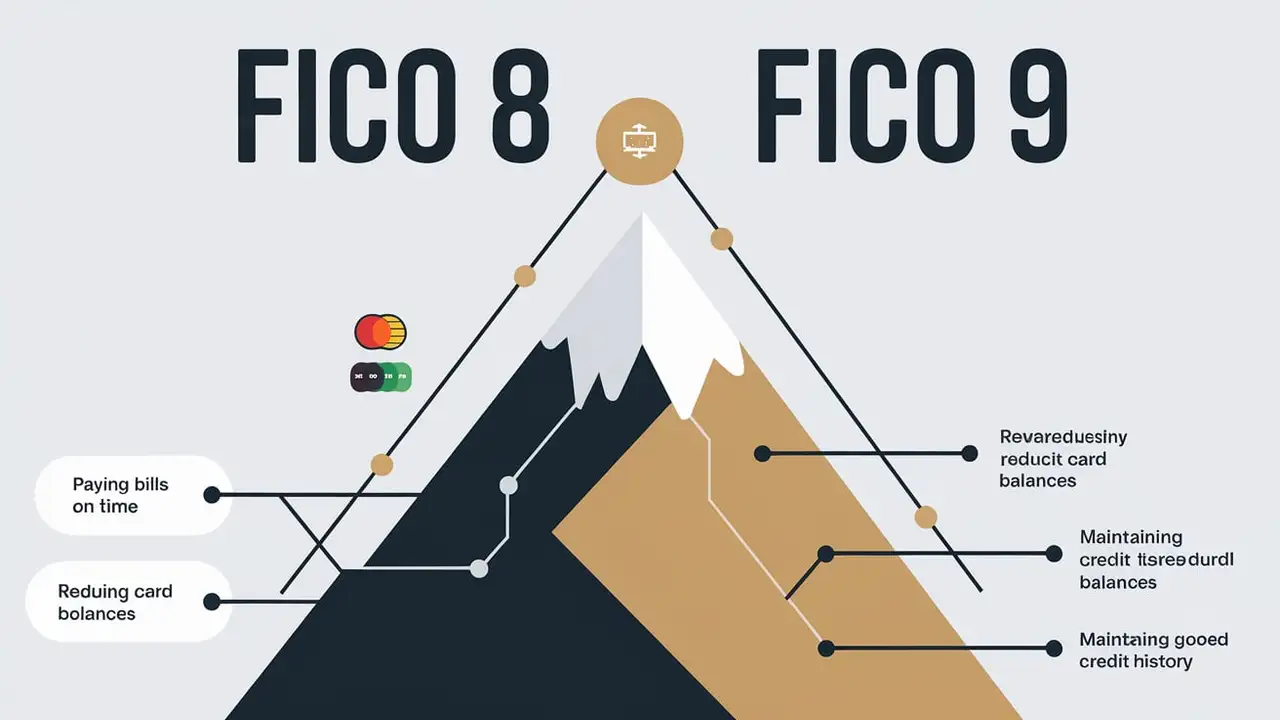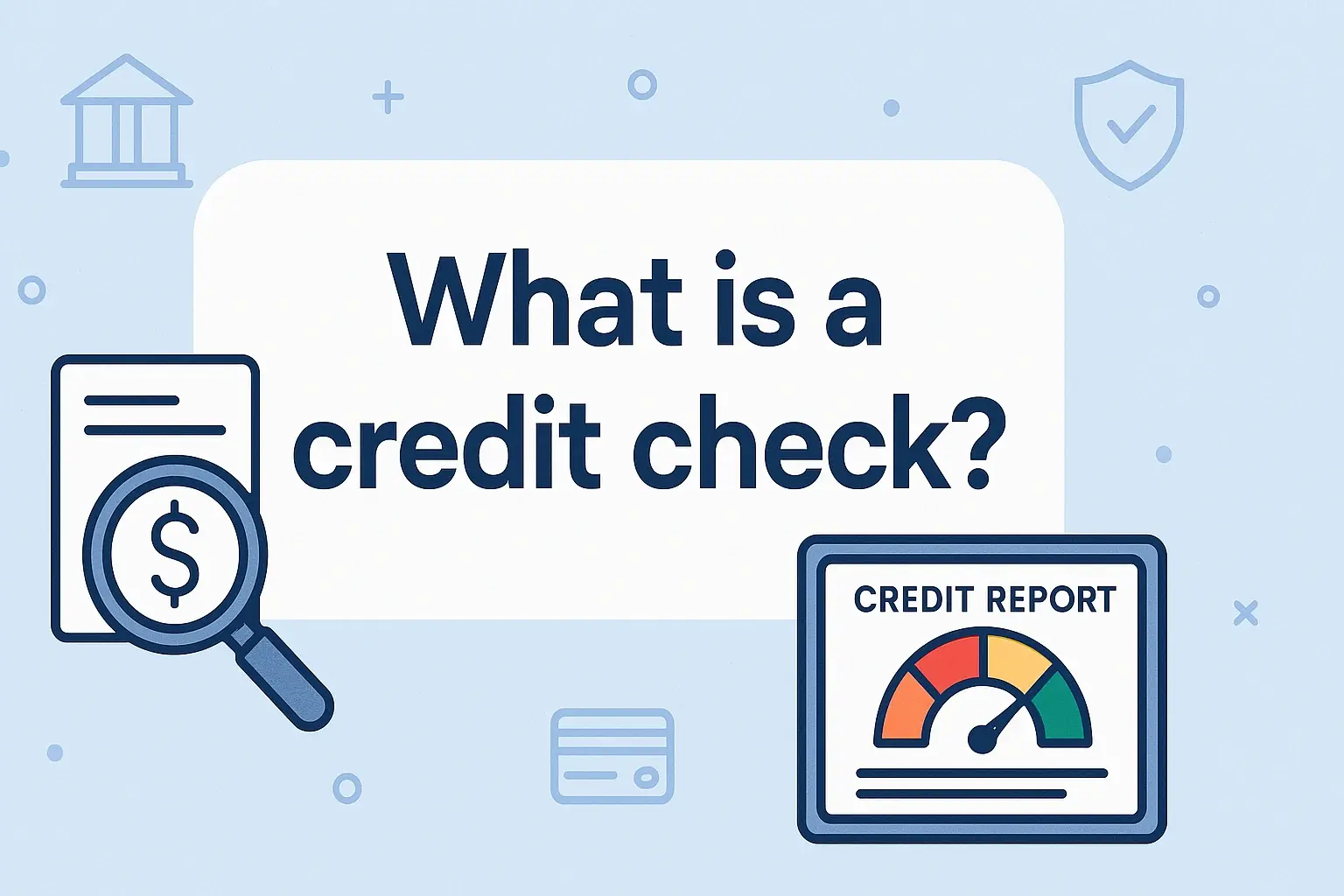-
Posted on: 05 Aug 2024

-
If you've checked your credit scores from different sources, you might have noticed discrepancies. One common observation is that your FICO 9 score can be higher than your FICO 8 score. This isn't necessarily a bad thing; it often reflects the updated methodologies and data weighting used in the newer FICO 9 model. Understanding these differences is crucial for interpreting your credit health accurately and making informed financial decisions.
Understanding FICO Scores: A Brief Overview
Before diving into the specifics of FICO 8 vs. FICO 9, let's briefly recap what a FICO score is and why it matters.
A FICO score is a three-digit number (ranging from 300 to 850) that represents your creditworthiness. It's calculated based on information in your credit report and used by lenders to assess the risk of lending you money. A higher FICO score generally indicates a lower risk, making you more likely to be approved for loans, credit cards, and other financial products with favorable interest rates and terms.
FICO scores are developed by the Fair Isaac Corporation (FICO), and there are multiple versions. Lenders can choose which FICO scoring model they use, leading to variations in the scores you see from different sources. FICO 8 and FICO 9 are two of the most widely used models, but they differ in how they evaluate certain aspects of your credit history.
Key Differences Between FICO 8 and FICO 9
The reasons why your FICO 9 score might be higher than your FICO 8 score boil down to a few key differences in how these models treat specific types of credit information:
1. Treatment of Medical Debt
This is arguably the most significant difference and often the primary reason for a higher FICO 9 score. FICO 9 places less emphasis on paid-off medical debt than FICO 8 does. In other words, if you had medical debt that has since been paid, FICO 9 will likely be more lenient. This is because FICO recognizes that medical debt is often unavoidable and not necessarily indicative of overall financial irresponsibility.
Specifically, FICO 9 virtually ignores medical debt that has been paid off. This is a significant departure from FICO 8, which, while considering the amount and age of the debt, still factored in paid medical collections. This change acknowledges the often-unpredictable nature of medical expenses and the potential for errors in medical billing.
The impact is substantial: If you had past medical debt that has been settled, FICO 9 could provide a noticeable boost to your score, while FICO 8 might still reflect the negative impact, albeit to a lesser extent.
2. Handling of Rent Payment Data
FICO 9 incorporates rental payment history into its scoring algorithm, whereas FICO 8 generally doesn't. While not all lenders report rental payment information to credit bureaus, FICO 9 can utilize this data if it's available. If you have a consistent history of on-time rent payments, this could positively influence your FICO 9 score.
This inclusion of rental history is a significant step toward financial inclusion. It recognizes that many individuals, particularly those with limited credit history, demonstrate responsible financial behavior through timely rent payments. By factoring in this information, FICO 9 can provide a more comprehensive and accurate picture of an individual's creditworthiness.
It's important to note that for rental payment history to impact your FICO 9 score, your landlord or property management company must report your payments to a credit bureau or a rent-reporting service that, in turn, reports to the credit bureaus. Services like Experian RentBureau, RentTrack, and others facilitate this reporting process.
3. Enhanced Analysis of Collection Accounts
While FICO 8 certainly considered collection accounts, FICO 9 offers a more refined analysis. It distinguishes between different types of collection accounts, prioritizing those that are more indicative of financial distress. For example, unpaid credit card debt sent to collections will likely have a greater negative impact than a minor utility bill that slipped through the cracks.
FICO 9's enhanced analysis also considers the overall trend of collection accounts. If you had multiple collection accounts in the past but have since demonstrated responsible credit behavior, FICO 9 may weigh the negative impact of those past collections less heavily.
4. Refined Risk Segmentation
FICO 9 employs more sophisticated risk segmentation techniques than FICO 8. This means that it's better at differentiating between different levels of risk within the same credit score range. For example, two individuals with the same FICO 8 score might be assigned different FICO 9 scores based on a more nuanced analysis of their credit profiles.
This refined segmentation allows lenders to make more informed lending decisions, as they can better assess the specific risks associated with each borrower. It also means that seemingly minor differences in your credit history can have a more pronounced impact on your FICO 9 score.
5. More Accurate Prediction of Delinquency
Ultimately, the goal of any credit scoring model is to accurately predict the likelihood of future delinquency. FICO claims that FICO 9 is more accurate in predicting delinquency than FICO 8. This increased accuracy is achieved through the incorporation of new data and the refinement of existing algorithms.
While you won't directly see this improved predictive power, it's important to understand that FICO 9 is designed to provide a more reliable assessment of your credit risk. This can benefit both lenders and borrowers by leading to more appropriate lending decisions and potentially lower interest rates for individuals with strong credit profiles.
Why the Differences Matter: Implications for Consumers
Understanding the differences between FICO 8 and FICO 9 has several practical implications for consumers:
- Improved Access to Credit: If you have a history of medical debt or have consistently paid your rent on time, FICO 9 could make it easier to qualify for loans and credit cards.
- Better Interest Rates: A higher FICO score can translate to lower interest rates on loans and credit cards, saving you money over the long term.
- More Accurate Credit Assessment: FICO 9 provides a more comprehensive and accurate picture of your creditworthiness, potentially leading to fairer lending decisions.
- Financial Planning: Knowing which scoring model is being used by a particular lender can help you better prepare for applying for credit. If you know a lender uses FICO 9, and you have a history of paid medical debt, you can anticipate a potentially more favorable outcome.
Which FICO Score Do Lenders Use?
This is a crucial question. While FICO 9 offers improvements, it's not universally adopted. Many lenders still rely on FICO 8, and some even use older versions like FICO 2, 4, or 5 (particularly for mortgage lending). It's important to research which FICO score a lender uses before applying for credit.
You can often find this information on the lender's website or by contacting their customer service department. Understanding which score they're using will help you better understand the likelihood of approval and the potential interest rates you'll be offered.
Beyond FICO: The VantageScore Alternative
It's also important to be aware of VantageScore, a competing credit scoring model developed by Equifax, Experian, and TransUnion. VantageScore also has multiple versions, and its methodologies differ from those of FICO. VantageScore 3.0 and 4.0 are the most current versions.
While VantageScore is widely used, FICO scores are generally considered the industry standard, particularly for mortgage lending. However, VantageScore is gaining traction, and it's becoming increasingly important to understand how your VantageScore differs from your FICO scores.
Building and Maintaining a Good Credit Score: General Tips
Regardless of which FICO scoring model is being used, there are some fundamental principles you can follow to build and maintain a good credit score:
- Pay Your Bills on Time: Payment history is the single most important factor in your credit score. Always pay your bills on time, every time.
- Keep Credit Utilization Low: Credit utilization is the amount of credit you're using compared to your total available credit. Aim to keep your credit utilization below 30%.
- Avoid Applying for Too Much Credit at Once: Each credit application results in a hard inquiry on your credit report, which can slightly lower your score.
- Monitor Your Credit Report Regularly: Check your credit report regularly for errors and inaccuracies. You can obtain a free copy of your credit report from each of the three major credit bureaus (Equifax, Experian, and TransUnion) annually at AnnualCreditReport.com.
- Consider Becoming an Authorized User: If you have a family member or friend with a good credit history, consider becoming an authorized user on their credit card. This can help you build credit, but make sure the primary cardholder is responsible with their payments.
Conclusion: Understanding Your Credit Landscape
The differences between FICO 8 and FICO 9 highlight the dynamic nature of credit scoring. As data evolves and analytical techniques improve, credit scoring models are constantly being refined to provide a more accurate assessment of credit risk. Understanding these changes is crucial for consumers seeking to navigate the complex world of credit and make informed financial decisions. While a higher FICO 9 score can be encouraging, it's essential to remember that lenders may use different scoring models. By understanding the key factors that influence your credit scores and adopting responsible credit habits, you can improve your overall creditworthiness and unlock a wider range of financial opportunities.











